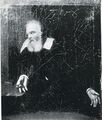Template:Selected anniversaries/August 25: Difference between revisions
No edit summary |
No edit summary |
||
| Line 93: | Line 93: | ||
||2012: Neil Armstrong dies ... astronaut who was the first man to walk on the moon (20 Jul 1969, Apollo 11). He served as a Navy pilot during the Korean War, then joined the National Advisory Committee for Aeronautics (which became NASA), as a civilian test pilot. In 1962, he was the first civilian to enter the astronaut-training program. He gained experience as command pilot of the Gemini 8 mission, which accomplished the first physical joining of two orbiting spacecraft. Later he was commander of the Apollo 11 lunar mission. From 1971, he worked as professor of aerospace engineering at the University of Cincinnati. He was a member of the commission that investigated the 1986 Challenger space shuttle disaster. Pic. | ||2012: Neil Armstrong dies ... astronaut who was the first man to walk on the moon (20 Jul 1969, Apollo 11). He served as a Navy pilot during the Korean War, then joined the National Advisory Committee for Aeronautics (which became NASA), as a civilian test pilot. In 1962, he was the first civilian to enter the astronaut-training program. He gained experience as command pilot of the Gemini 8 mission, which accomplished the first physical joining of two orbiting spacecraft. Later he was commander of the Apollo 11 lunar mission. From 1971, he worked as professor of aerospace engineering at the University of Cincinnati. He was a member of the commission that investigated the 1986 Challenger space shuttle disaster. Pic. | ||
||2013: Akio Hattori dies ... mathematician working in algebraic topology who proved the Hattori–Stong theorem. No DOB. Pic search: https://www.google.com/search?q=Akio+Hattori+mathematician | |||
File:George Spencer-Browne.jpg|link=George Spencer-Brown (nonfiction)|2016: Polymath [[George Spencer-Brown (nonfiction)|George Spencer-Brown]] dies. He wrote ''Laws of Form'', calling it the "primary algebra" and the "calculus of indications". | File:George Spencer-Browne.jpg|link=George Spencer-Brown (nonfiction)|2016: Polymath [[George Spencer-Brown (nonfiction)|George Spencer-Brown]] dies. He wrote ''Laws of Form'', calling it the "primary algebra" and the "calculus of indications". | ||
Revision as of 10:33, 20 January 2019
1609: Galileo Galilei demonstrates his first telescope to Venetian lawmakers.
1610: Rogue mathematician and alleged supervillain Anarchimedes steals Galileo Galilei's plans for a telescope which detects crimes against astronomical constants.
1698: Physicist, mathematician, and inventor Denis Papin demonstrates new version of his steam digester which uses Gnomon algorithm principles to generate gray light and cryptographic numina.
1699: Mathematician and mechanician Charles Étienne Louis Camus born. He will be the author of Cours de mathématiques (Paris, 1766), along with a number of essays on mathematical and mechanical subjects.
1818: Mechanical soldier Clock Head receives several patents for an improvements to steam engines.
1819: inventor, engineer, and chemist James Watt dies. He made major improvements to the steam engine.
1933: Clock Head 2 publishes new class of Gnomon algorithm functions which detect and prevent crimes against mathematical constants.
1934: Inventor Philo Farnsworth demonstrates his electronic television system to the public at the Franklin Institute in Philadelphia.
1948: The House Un-American Activities Committee holds first-ever televised congressional hearing: "Confrontation Day" between Whittaker Chambers and Alger Hiss.
2012: Voyager 1 crossed the heliopause to become the first spacecraft to enter interstellar space and study the interstellar medium.
2016: Polymath George Spencer-Brown dies. He wrote Laws of Form, calling it the "primary algebra" and the "calculus of indications".
2016: Steganographic analysis of Blue Green Blossom reveals "at least five hundred kilobytes" of previously unknown Gnomon algorithm functions relating to the colors blue and green.











